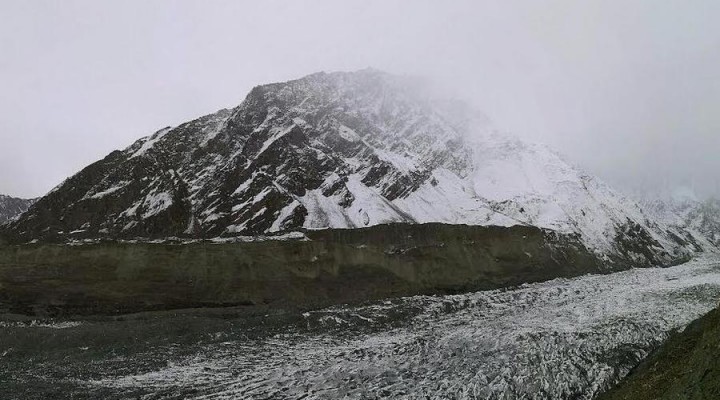
New report warns that two-thirds of glaciers in the Hindu Kush Himalayan region, which feed 10 major river systems across Asia, could melt by 2100
There was no official leak, but this must have been discussed when Presidents Xi Jinping and Emmanuel Macron met last week in Paris. After all, Macron has been posing as a staunch defender of the environment and the self-attributed MC of the Paris Agreement on Climate Change.
The Hindu Kush Himalayan region extends for 3,500km across eight nations. It is the earth’s de facto Third Pole, considering the immense amount of ice it holds. The area is an absolutely critical water source for about 250 million mountain dwellers across Asia, as well as the staggering 1.65 billion people living in the river valleys below.
Now, a detailed report by the International Centre for Integrated Mountain Development (ICIMOD), the result of five years of research by over 350 analysts and policy experts from 22 nations and 185 organizations, has come to a stark conclusion.
Even if the Paris Agreement goal of limiting global warming to 1.5 degrees Celsius by the end of the century is met – and everyone attuned to realpolitik knows that it won’t – that would cause the melting of nothing less than one-third of glaciers in the Hindu Kush Himalayan region.
Considering that the Paris Agreement goal won’t be realistically met, that translates into current emissions leading to no less than five degrees (5C) in warming and the melting of two-thirds of the Hindu Kush Himalayan glaciers by 2100. Imagine that spectacular succession of glacier-covered peaks across the region being mostly reduced to bare rock in less than a century.
The full report is here.
Flooding, flooding everywhere
The hyper-complex Hindu Kush Himalayan system crisscrosses Afghanistan, Pakistan, China, India, Nepal, Bhutan, Bangladesh and Myanmar. Glaciers in this region feed the Ganges, the Indus, the Yellow River, the Mekong and the Irrawaddy – among 10 major river systems. Directly and indirectly, these glaciers supply 1.65 billion people with clean air, food, energy – and jobs.
The path towards environmental disaster is eerily straightforward. Melting glaciers flow into rivers and lakes. Bursting lakes inevitably translate into more floods. And that means extra glacier runoff into major rivers, more flooding and inevitable destruction of crops.
Late last year in my travels in the Karakoram I saw quite a few receding glaciers. The photo above, of the Hopper glacier in Gilgit-Baltistan in northern Pakistan, gives an idea of what a receding glacier looks like, at very close range.
The ICIMOD report stresses how about one-third of the 250 million mountain people in the Hindu Kush Himalaya live on less than US$1.90 a day. More than 30% don’t have enough to eat, and around half may be “facing some form of malnutrition.”
Compare that to the fact the hydropower potential of the Hindu Kush Himalayan region is immense – enough, according to the report, to power half a billion homes across the eight nations.
In northern Pakistan, I saw how scores of mini-hydropower plants have been set up, as part of the China-Pakistan Economic Corridor (CPEC). Still, more than 80% of the rural population across the eight HKH nations relies on firewood and dung. And around 400 million people, especially in India, still don’t have basic access to electricity.
Amazon forests also doomed?
Meanwhile, the alarming prospects for the Hindu Kush Himalayan region are mirrored in the tropics by what lies in store for the Amazon rainforest.
The new administration of Brazil’s far-right President Jair Bolsonaro looks set to destroy every single political, legal and trade-system impediment to transform a great deal of the Amazon into Soyaland – to the delight of the powerful agribusiness lobby.

The land rights of indigenous Brazilian populations have already been severely limited. Deforestation, even during the presidential election campaign, from August to October 2018, shot up 50%.
By late 2018, no less than 75% of China’s soyabeans were already being imported from Brazil – and that figure is rising. After all, Brazil has got what it takes: command of the necessary infrastructure, and an immense, “unexploited” land area. Beijing faced no problems whatsoever; the entire US shortfall, because of the US-China trade war, was instantly replaced by Brazil.
Predatory casino capitalism is about to coin a new motto: Had enough of Himalayan floods? Go plant soya in the Amazon.
https://www.asiatimes.com/2019/04/article/himalayan-glaciers-on-the-eve-of-destruction/

Pepe Escobar
Pepe Escobar, a veteran Brazilian journalist, is the correspondent-at-large for Hong Kong-based Asia Times. His latest book is “2030.”
 TheAltWorld
TheAltWorld
0 thoughts on “Himalayan glaciers on the eve of destruction”